Intentar ORO - Gratis
5 Ways To Reduce Your Fashion Footprint
Muse Science Magazine for Kids
|September 2019
Five ways to make a difference.

A revolution is underway within the fashion industry. Shoppers and designers alike are making choices to reduce their fashion footprint as sustainability becomes the newest trend.
UNDRESSING THE FASHION INDUSTRY
Behind the vibrant colors and eye-catching prints of new clothes lies a dirty secret. The fashion industry is one of the world’s most polluting industries. From contaminated soil and dye-stained rivers to tons of textile waste, fashion comes at a high cost to the environment. Added to this, the process of making new clothes consumes large amounts of natural resources.
The raw natural materials, such as cotton, that make up fabric require an immense amount of space to grow. Land that’s growing cotton for clothing can’t be used to grow food. Farmers usually use vast amounts of water and pesticides to grow the fabric crop. Some estimate that the fashion industry uses a quarter of the insecticides produced in the world. When these toxic chemicals escape into the environment, they pollute land and waterways and harm the health of people who live nearby.

To make one pair of jeans requires 140 square feet (13 sq m) of land and more than 950 gallons (3,625 liters) of water to grow the cotton. That is enough water to quench the thirst of an average adult for around three years.

ALWAYS SOMETHING NEW
Esta historia es de la edición September 2019 de Muse Science Magazine for Kids.
Suscríbete a Magzter GOLD para acceder a miles de historias premium seleccionadas y a más de 9000 revistas y periódicos.
¿Ya eres suscriptor? Iniciar sesión
MÁS HISTORIAS DE Muse Science Magazine for Kids
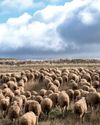
Muse Science Magazine for Kids
ANIMAL FIREFIGHTER TO THE RESCUE
Can animals help manage the risks of deadly wildfires?
3 mins
Muse July 2025: The Story Behind Wildfires

Muse Science Magazine for Kids
FIRE DANGER
WHY THE RISK OF WILDFIRES KEEPS GROWING
4 mins
Muse July 2025: The Story Behind Wildfires
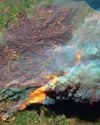
Muse Science Magazine for Kids
The Miller NEW Normal
WHAT TODAY’S WILDFIRES TELL US ABOUT OUR FUTURE
8 mins
Muse July 2025: The Story Behind Wildfires
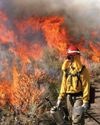
Muse Science Magazine for Kids
WOMEN AND FIREFIGHTING: A GOOD FIT
Jessica Gardetto is a firefighter. Her father was, too. “I grew up with my dad coming home smelling like wildfire and covered in soot,” she says.
1 min
Muse July 2025: The Story Behind Wildfires

Muse Science Magazine for Kids
What is happening on your fingertips when they get all wrinkly in a hot tub?
—Felix G., age 10, Montana
1 mins
Muse July 2025: The Story Behind Wildfires

Muse Science Magazine for Kids
WHEN the SMOKE CLEARS
THE LINGERING EFFECTS OF THE RECENT PACIFIC PALISADES AND ALTADENA EATON FIRES
6 mins
Muse July 2025: The Story Behind Wildfires

Muse Science Magazine for Kids
PICKING TEAMS
Keep it fair with a strategy that relies on geometry.
2 mins
Muse July 2025: The Story Behind Wildfires
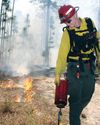
Muse Science Magazine for Kids
SHAN CAMMACK
WILDLIFE BIOLOGIST AND FIRE SAFETY OFFICER
3 mins
Muse July 2025: The Story Behind Wildfires
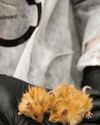
Muse Science Magazine for Kids
Scientists Create Mice With Woolly Mammoth-Like Fur
RESEARCHERS AT A COMPANY IN TEXAS ARE WORKING TO CREATE A LIVING ANIMAL THAT RESEMBLES THE EXTINCT WOOLLY MAMMOTH. Recently, they produced mice with traits of the large mammal. The mice all have coats with mammoth-like fur, and some of the small mammals also have genes that help them store fat. Both features would help the animals survive in the cold Arctic, where the woolly mammoth once lived.
1 min
Muse July 2025: The Story Behind Wildfires
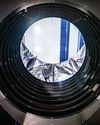
Muse Science Magazine for Kids
Cool Sunshade Added to the Nancy Roman Space Telescope
THE NANCY ROMAN SPACE TELESCOPE IS A NEW TELESCOPE THAT NASA IS BUILDING AND WILL LAUNCH INTO SPACE, LIKELY IN EARLY 2027.
1 min
Muse July 2025: The Story Behind Wildfires
Translate
Change font size

